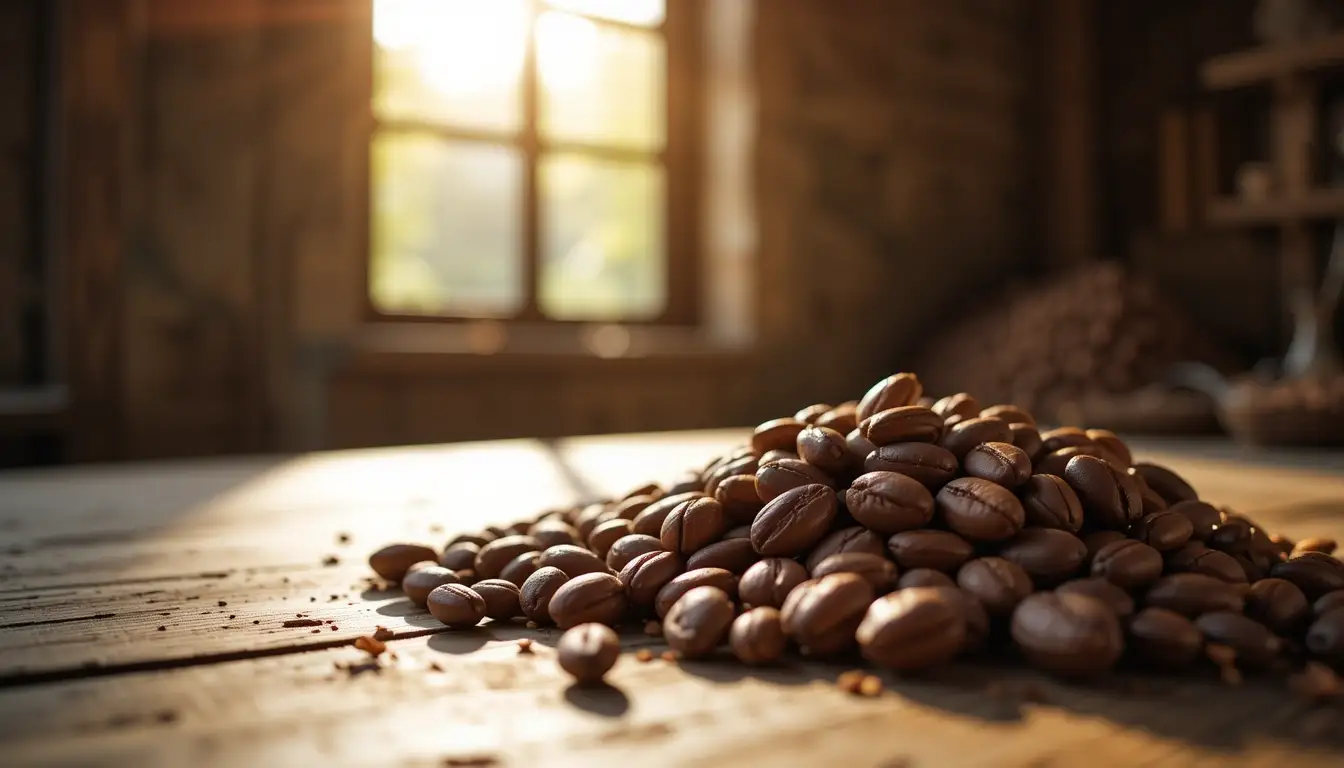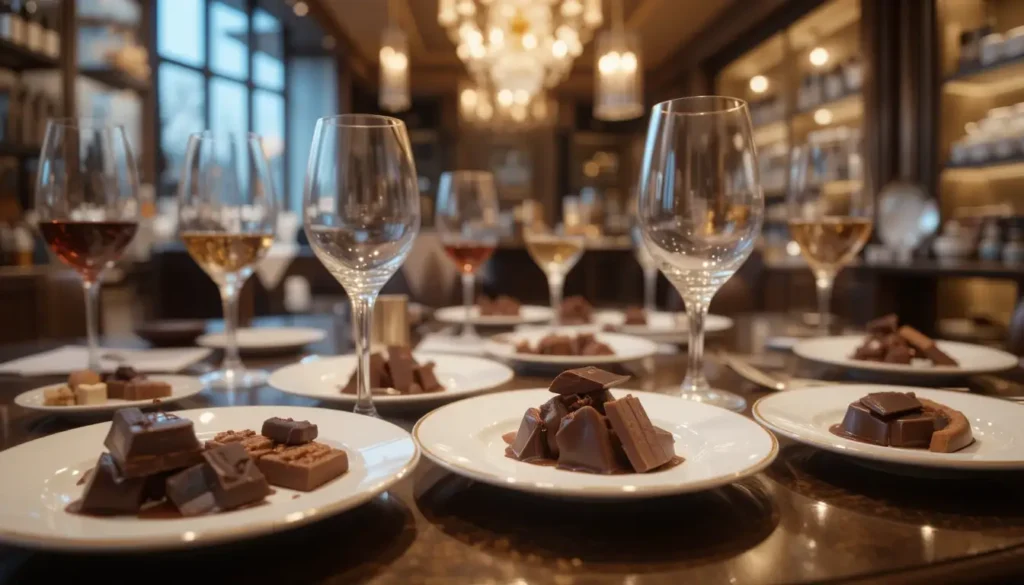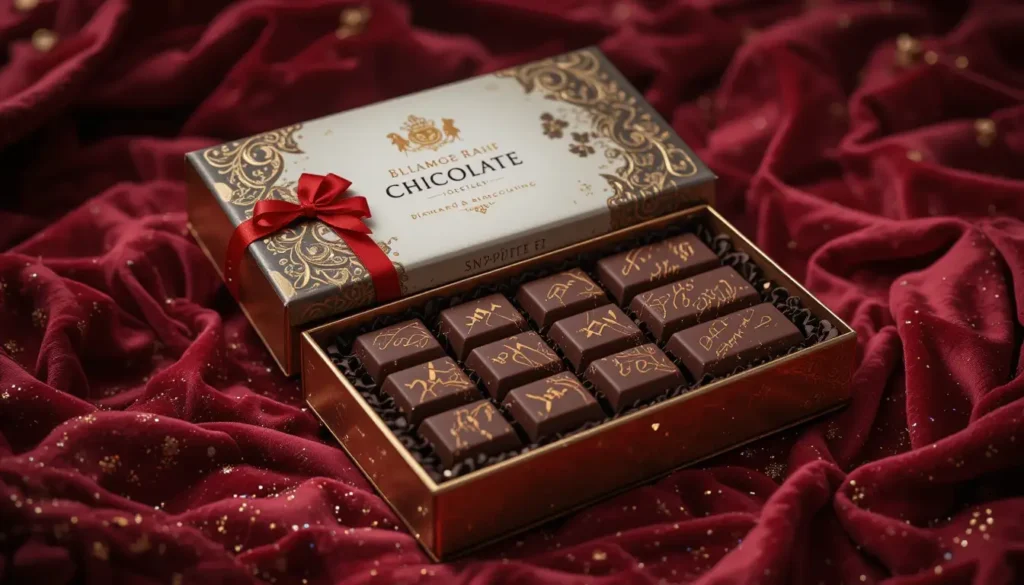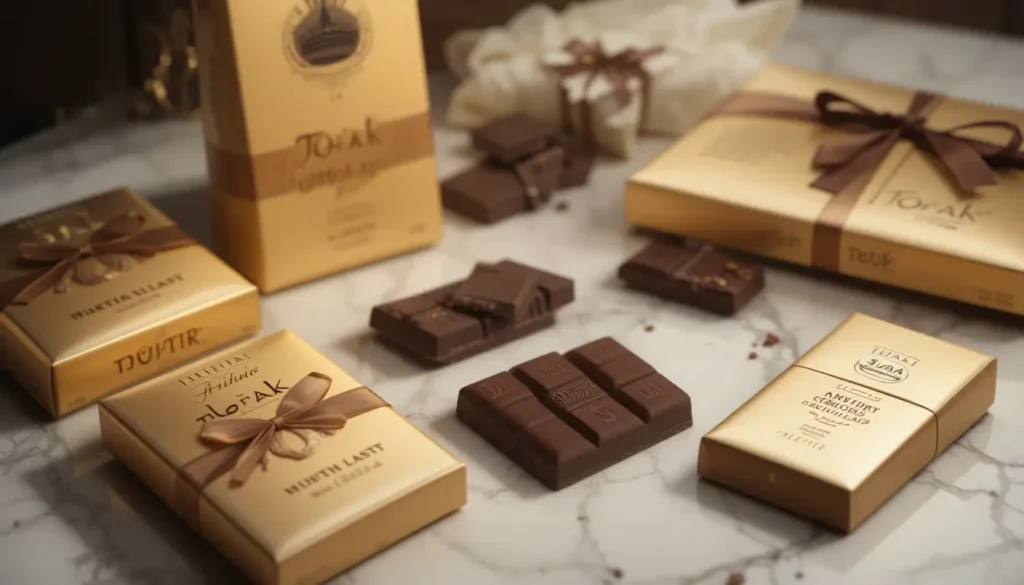Chocolate has long been cherished as one of the world’s most indulgent and satisfying treats. From the simplest milk chocolate bars to luxurious dark chocolate truffles, there’s something for everyone. However, in the world of chocolate connoisseurs, a select few bars stand above the rest—not just because of their taste, but due to their rarity. The rarest chocolate bars in the world are treasures, prized not only for their scarcity but also for their exceptional ingredients, exclusive recipes, and extraordinary craftsmanship.
But what makes a chocolate bar rare? Is it the cocoa beans it’s made from, the method of production, or perhaps its exclusivity? To answer this question, we need to delve deeper into the world of rare chocolate and explore the factors that contribute to a chocolate bar’s status as one of the most coveted and expensive delights.
Table of Contents
Factors That Make Chocolate Rare

The Role of Exotic Cocoa Beans and Their Origins
The rarity of a chocolate bar often begins with the beans themselves. Cocoa beans, especially those sourced from unique or hard-to-find locations, are a primary factor in determining a chocolate bar’s rarity. Cocoa plants thrive in tropical climates, and some of the rarest and most prized beans are harvested from regions with ideal growing conditions but limited output.
For example, many consider criollo beans some of the rarest and most sought-after cocoa beans in the world. They stand out for their distinct, smooth flavor profile, often described as fruity and floral with a subtle tang. Criollo beans are hard to grow and vulnerable to disease and pests, making them rare and valuable. Chocolate bars made from these beans are limited in supply, driving up their price and rarity.
Limited Edition Chocolate Bars and Why They’re Rare
Another factor that contributes to a chocolate bar’s rarity is its limited edition or small-batch production. Luxury chocolate brands frequently release limited-edition bars that are only available for a short period or in very small quantities. These exclusives often use rare ingredients, making them even more coveted by chocolate enthusiasts and collectors.
Certain brands collaborate with high-end chocolatiers or artisan producers to create limited-edition bars using rare beans or unique flavor combinations. Once sold out, these bars are never made again, making them rare and valuable to collectors. Their scarcity and high price increase their exclusivity, attracting those who see chocolate as both art and luxury.
Artisan Craftsmanship: The Impact of Small-Batch Production
In the world of rare chocolate, craftsmanship matters just as much as ingredients. While mass-produced chocolates are made on a large scale, skilled artisans craft rare chocolates in small batches. These chocolatiers dedicate time and effort to perfect their products, ensuring that each bar is crafted with care and precision.
Artisan chocolate makers experiment with various production methods, including hand-tempering, single-origin sourcing, and bean-to-bar techniques. By controlling every stage of the process, they create bars with unique flavor profiles that mass producers can’t replicate. Small-batch production ensures the use of the freshest ingredients, further enhancing the chocolate’s quality and rarity.
The Influence of Unique and Rare Ingredients in Chocolate
One of the most fascinating aspects of rare chocolate is the ingredients used to make it. Many rare chocolate bars incorporate exotic and hard-to-find ingredients that aren’t typically used in everyday chocolate production. These can include rare spices, edible gold, aged liquor, and even unique fruit infusions. Some of the most expensive and rare chocolates feature these ingredients, elevating the taste and experience for the consumer.
Chocolate bars infused with yuzu, a rare citrus fruit from East Asia, are highly prized by collectors. Saffron, a spice often more expensive than gold, is another sought-after ingredient. These ingredients are hard to find and harvested in small quantities. When added to premium chocolate, they become rare and valuable.
The Rarest Chocolate Bars in the World
To’ak Chocolate: The World’s Rarest and Most Expensive Chocolate
To’ak Chocolate stands out as one of the rarest and most luxurious chocolate bars in the world. Based in Ecuador, To’ak uses Arriba Nacional cocoa beans, a rare and prized variety celebrated for their complex, rich flavor profile.The company commits to sustainable farming practices. They hand-harvest beans from ancient cocoa trees, often over 100 years old.
To’ak Chocolate is famous for its high prices, with some bars costing as much as $400 each. Limited-edition versions can cost even more. The brand uses aged chocolate, similar to wine, allowing it to mature for years. This aging process develops deeper, more complex flavors. With limited annual production, To’ak is one of the rarest chocolate brands in the world.
Amedei Porcelana: The Luxury Chocolate That’s Uniquely Italian
Another contender for the rarest chocolate bar is Amedei Porcelana, an Italian-made luxury chocolate. It’s made with the rare Porcelana cocoa bean, grown in Venezuela and renowned for its smooth, delicate flavor. The beans are less bitter than most cocoa varieties. Amedei selects the beans by hand to ensure top quality.
Amedei is known for its commitment to perfection, and its Porcelana bars perfectly showcase this dedication. With a price tag of around $90 to $100 per bar, Amedei Porcelana is both rare and expensive, but its exceptional flavor and fine craftsmanship make it a prized possession for true chocolate lovers.
Chocolatier’s Secret Bars: Chocolate with Rare Ingredients and Unconventional Methods
Some chocolatiers take rarity a step further by combining unique ingredients or using unconventional production methods. Chocolatier’s Secret Bars refer to chocolate made by independent chocolatiers. These chocolatiers experiment with rare and unusual ingredients. Examples include Tahitian vanilla, smoked sea salt, and saffron-infused chocolate.
These rare ingredients, combined with traditional techniques and small-batch production, create chocolate bars that are one-of-a-kind.
These bars might only be available at specific chocolate festivals, luxury events, or high-end department stores, making them rare in both availability and composition.
What Makes These Chocolate Bars So Expensive?
Limited Availability and High-End Pricing
One of the primary reasons for the high prices of rare chocolate bars is their limited availability. These bars are often produced in limited quantities, increasing their price. The exclusivity makes them highly desirable. Collectors and enthusiasts are willing to pay top dollar for something rare. They may never find it again.
The Importance of Sourcing and Rare Cocoa Varieties

Another factor driving the price of rare chocolate bars is the source of the cocoa. Chocolate makers who use single-origin cocoa or rare cocoa varieties, such as Arriba Nacional or Porcelana, are offering something much more specialized than standard chocolate. The rarity of these cocoa beans and the labor-intensive process of harvesting them contribute to the overall cost of the chocolate.
The Story Behind the Brand and Its Influence on Price
For some of the world’s rarest chocolate bars, the story behind the brand plays a significant role in its price. Brands like To’ak and Amedei stand out for their high-quality ingredients, commitment to sustainability, ethical sourcing, and luxury. Consumers are willing to pay a premium for chocolate that supports a cause, whether it’s sustainability or preserving rare cocoa species, as it adds an extra layer of value to the product.
Where to Find These Rare Chocolate Bars
Finding Rare Chocolate: Specialty Shops vs Online Retailers

When it comes to purchasing rare chocolate bars, the search can be both thrilling and daunting due to the exclusivity and limited distribution of these products. Many of the world’s rarest chocolate bars are available in high-end specialty chocolate shops. These stores often carry premium selections that include artisanal and limited-edition products, providing a curated experience for true chocolate lovers. They are typically located in major cities with a reputation for fine dining and luxury products, such as New York, Paris, London, and Tokyo.
However, not everyone has access to these specialty shops. Thankfully, many rare chocolate bars are now available through online retailers. Websites like Chocolatier’s, Luxury Chocolate Shops, and Food Stores offer rare chocolate bars to international customers. Some also provide subscription services that deliver chocolates directly to your door. These services often include special packaging to enhance the experience.
Online shopping expands access, but rare chocolate bars often face price markups, especially with international shipping. Extra shipping fees and import taxes can raise the final cost. However, many consider the rarity of the chocolate worth the price.
Luxury Boutiques and High-End Retailers Offering Exclusive Chocolate
If you’re willing to spend extra for the experience of purchasing rare chocolate in person, luxury boutiques and high-end retailers are another excellent option. These stores often carry exclusive collections from renowned chocolatiers that are not available anywhere else. For example, department stores like Harrods in London or Selfridges in Manchester offer a curated selection of rare chocolate bars from brands like Amedei, Pierre Marcolini, and To’ak. These boutiques may also feature limited-edition collaborations between chocolatiers and designers, making them even more appealing to those seeking rarity and exclusivity.
These luxury stores not only offer access to rare chocolate but often provide an elevated shopping experience, including tastings and personalized recommendations from chocolate experts. This makes the purchase of rare chocolate more than just an acquisition; it becomes an event or a luxury experience in itself.
The Exclusivity of Rare Chocolate Bars and Their Limited Distribution
The rarity of certain chocolate bars is not just about the ingredients, but also about their limited distribution. Many premium chocolate brands release rare products in small batches, selling only a select few to the public. For example, To’ak often only releases a limited number of bars each year, sometimes restricting sales to private events or by invitation only. This makes the chocolate more elusive and desirable.
In some cases, brands will only sell their rare chocolate bars through specific channels, such as partnerships with high-end restaurants, hotels, or galleries. These collaborations increase the rarity of the chocolate even further, as customers must seek out these specific outlets to gain access.
The perception of exclusivity increases demand, which in turn drives up the price. For example, you can usually find the Amedei Porcelana chocolate bar in select fine-dining restaurants or luxury food markets, making it a treat reserved for those with deep pockets or insider knowledge.
The Future of Rare Chocolate
Trends in the Chocolate Industry: More Premium, More Rare?
The world of chocolate is evolving rapidly, and with that, the demand for rare and premium chocolates is increasing. Consumers today are increasingly seeking out luxury items, and chocolate is no exception. As consumers become more selective, they are willing to spend more on exclusive products with unique experiences.
In the future, rare chocolate bars may feature both exotic cocoa and innovative, rare ingredients. Think of flavor pairings with artisanal spices, unusual fruits, or even high-end liquors such as rum, whiskey, or champagne-infused chocolate. These innovations could expand what we define as rare chocolate. The search for new flavors will excite collectors and connoisseurs.
Sustainability in the World of Luxury Chocolate Bars
As the chocolate industry continues to grow, so does its focus on sustainability, especially in the production of the rarest chocolate bars. Many luxury chocolate makers source their cocoa ethically by working directly with farmers. They support fair wages, better working conditions, and environmental practices. This push for sustainability not only improves cocoa farmers’ lives but also addresses concerns over deforestation and the environmental impact of cocoa farming. By prioritizing ethical practices, these chocolatiers help preserve the future of the rarest chocolate bars and the planet.
Some rare chocolate bars are particularly notable for their focus on sustainability. For instance, To’ak Chocolate works to preserve biodiversity in Ecuador’s cacao-growing regions and promotes eco-friendly cocoa farming practices. Brands involved in sustainable farming often label their chocolates as rare. This highlights the care in production. It adds extra value for consumers.
Sustainability is becoming more important as consumers recognize the ethical impact of their food choices. In the future, people will value rare chocolate bars not only for their exclusivity and quality but also for their positive environmental and social impact.
The Role of Ethical Sourcing in Shaping the Future of Rare Chocolate
In line with sustainability, ethical sourcing is becoming an increasingly important factor in the chocolate industry. Ethically sourced rare chocolate bars are becoming more popular as consumers seek products that reflect their values. Chocolatiers who work directly with farmers ensure fair compensation for their hard work. They bypass large suppliers to do so.
Moreover, traceability in chocolate production is becoming a priority. Consumers are becoming more curious about the origins and production processes of their chocolate. By offering transparency, brands can highlight ethical sourcing practices behind their rare chocolate. This boosts the product’s reputation and meets the demand for conscious consumption.
FAQs
What is the rarest chocolate in the world?
The rarest chocolate in the world is often To’ak Chocolate, made from the rare Arriba Nacional cocoa beans. To’ak crafts it in small batches. Some bars cost hundreds of dollars. To’ak is one of the most expensive and exclusive chocolates available.
Why are rare chocolate bars so expensive?
Rare chocolate bars are expensive because of limited availability of rare ingredients like unique cocoa beans. They are produced in small batches, which drives up costs. Additionally, their exclusivity adds to the high price. These chocolates often require skilled artisans and meticulous processes, adding to their cost. Additionally, the story behind the brand and its commitment to sustainability can also drive up the price.
Where can I buy rare chocolate bars?
You can find rare chocolate bars at specialty chocolate shops, luxury retailers, and online stores. Some bars are also available in exclusive boutique shops or by invitation-only sales, making them harder to find. For some of the rarest chocolates, you may need to search high-end department stores or even attend private chocolate-tasting events.
Are rare chocolate bars made from special cocoa beans?

Rare chocolate bars use special cocoa beans like Criollo, Arriba Nacional, or Porcelana. These beans have exceptional flavor and rarity. They grow in small quantities, making them hard to find. This scarcity adds to the rarity of the chocolate bars.
What makes chocolate rare and valuable?
Chocolate becomes rare and valuable when made with exotic, high-quality ingredients and produced in limited quantities. It’s prized for its origin in reputable brands known for quality and sustainability. The rarity of the cocoa beans and unique production methods make these chocolates highly sought after and expensive.
If you’re curious about making your own luxurious chocolate creations, check out the Dubai Chocolate Bar Recipe: A Luxurious Treat at Home.
Why are ethical sourcing and sustainability important in rare chocolate production?
Ethical sourcing guarantees fair payment for cocoa farmers and promotes environmentally sustainable practices. In the world of the rarest chocolate bars, the story behind each product adds significant value. Consumers care more about its impact.
Conclusion
The rarest chocolate bars are not just treats; they are works of art. They use rare cocoa and sustainable methods. Brands like To’ak and Amedei create exclusive chocolates prized for their quality and ethical sourcing. As sustainability gains importance, many view these bars as both a luxury and a way to promote positive change in the chocolate industry.
While expensive, rare chocolates provide a unique experience that goes beyond flavor, allowing enthusiasts to appreciate craftsmanship and small-batch production. Whether it’s Amedei’s Porcelana or To’ak, these chocolates represent the pinnacle of luxury and sustainability.
If you’re interested in the various forms of chocolate, you can explore Which Country Has the Best Quality Chocolate in the World, such as in decadent desserts like chocolate cheesecake – What is the best flavor of cheesecake?

